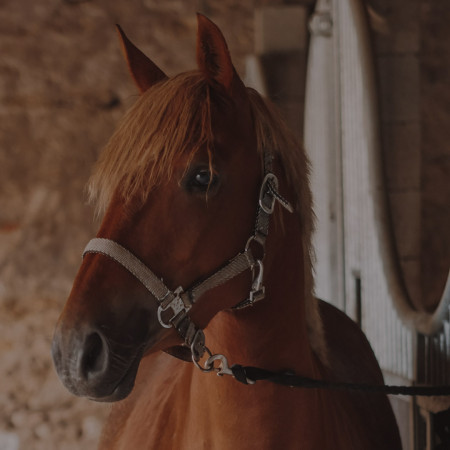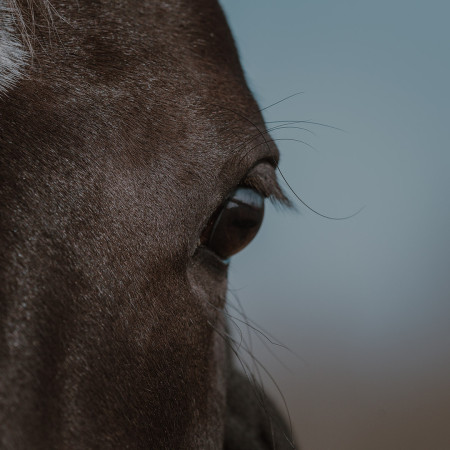
10 Tips for comfortable transportation
Sooner or later every horse has to be transported, whether it is moving to another stable, taking part in a show or event, need clinical care, attending a training course or being ridden outside. Some horses don’t mind travelling, but others baulk at entering a trailer as far as possible. This is comprehensible from the horse’s point of view: A trailer restricts freedom of movement and visibility and also jerks disagreeably when set in motion. To make travelling in a trailer as pleasant as possible for the horse, we listed 10 tips that allow both horse and owner to prepare for transport in a good way.
1. Driving a horse trailer takes practice
One good way of reducing uncomfortable behavior in the horse is training. Entering and exiting the trailer is something horses should learn, as well as not losing their balance while the vehicle is moving. The best way of doing this is to repeatedly lead the horse to the trailer, praising as appropriate, and making short practice runs. The horse will then learn that the dark hole it is supposed to enter is not so dreadful, nor will anything bad happen en route. Ideally, the destination should always be something that the horse likes, as the pasture for example.
2. The trailer must meet the road regulations
This rule is important: at the end of the day both horse and driver benefit from a stable trailer construction with a sound coupling, good tyres and reliable brakes. The driver must also hold the right licence. It is also necessary to check that the towing vehicle is even permitted to pull a trailer. Something else to bear in mind is that the horse’s weight must be added to the weight of the trailer. Exceeding the permitted weight may result in damage to the vehicle (and injury to the horse!) and turn out to be a costly affair. Don’t forget to think about taking out suitable insurance.
3. Driving a trailer must be safe
Besides having the right trailer equipment, the procedure used for training is also relevant to safety. Please make sure you start practising loading your horse into the trailer before the day of the trip and show the required patience. The horse should be fitted out with what it will be wearing on the day so it can familiarise itself with the accessories used during transport. Strategies such as blindfolding the horse with a cloth over the eyes won’t contribute to well-being, but will make the horse nervous. And a nervous horse standing before or in a trailer is always a safety risk.
4. The trailer should be “horse-friendly”
A trailer above all needs a non-slip floor. This should be freshly sprinkled with shavings before setting off as this will be good for both hooves and joints and cushions bumpy roads. Inside, the trailer should be light in colour and at least 2.30 meters in height. The side walls should be padded to waist-level as well as the rails/posts.
5. The horse trailer is preferably state of the art
This of course means that trailers with roofs that flap about need to be put to one side. Every trailer should be inspected for possible deterioration while not in use or for any loose parts before each journey. State of the art however also includes possibly installing a little camera showing via a display in the vehicle whether the horse is managing all right in the trailer.
6. The horse trailer must be properly equipped
A short tether rope or chain should be securely affixed in the trailer. Alternatively, a lead rope with a panic snap may be used, allowing the horse to be quickly released in case of emergency. The horse should wear a properly fitting halter and be held securely with a long rope during loading and unloading. Leg protection is also recommended for horses that are frequently transported. Normal bandages with or without pads or over-reach-boots should be used for transportation, as well as standard closed or special transport gaiters. It is important that the splint bones and hock joints are covered and that the leg protection extends over the coronary groove to the ground.
7. The horse should feel comfortable in the trailer
Confined in a narrow trailer, a horse is unable to keep warm by moving around. On cold days it is therefore important to think about using a rug and on wet days a rain blanket. As the windows should stay open in warm weather, so possibly producing a draught in the trailer, a light fly rug is recommended, even in summer, especially for horses with a sensitive back. Incidentally In some cases feed supplements with calming properties may be useful prior to the journey to avoid unwanted behavior, particularly in nervous horses. It is important to consider beforehand how long in advance you should start administration if you are to achieve the desired effect. Don’t forget that this might be relevant in terms of doping.
8. The horse trailer must be driven properly
The driver should take bends slowly and with care, where possible refraining from suddenly braking or accelerating wildly. A vehicle responds more slowly with a trailer attached as it becomes heavier. You should therefore plan the route carefully and think ahead as much as you can while driving.
9. Ensure the horse’s welfare in the trailer
On long journeys make sure you take a hay net with you. Chewing will make the horse calmer and distract its attention. The net should not however hang too low so the horse could get caught up in it or has to take up an unnatural position to eat. During stops offer the horse with water from your own stable. You should therefore take along one to two 10l canisters in your vehicle as well as a first aid kit for both - humans and horses. According to European Commission Regulations (EC) No 504/2008 of 6 June 2008, it is necessary to carry the passport of the horse whenever it is transported in the EU (similar regulations are exisiting also outside the EU).
10. When the journey comes to an end
Remember that when you open up the trailer on arrival, your horse will probably be delighted to be able to move again and will be correspondingly boisterous. Despite monitoring the horse with a camera, you may have overlooked a scratch or scrape or it may have lost a shoe which need to be checked imediately after save arrival.
Dr. med. vet. Caroline Fritz




